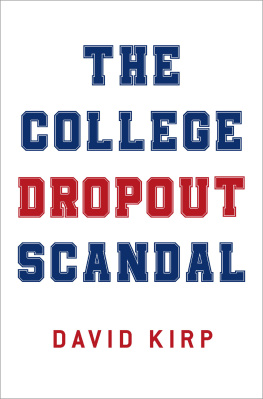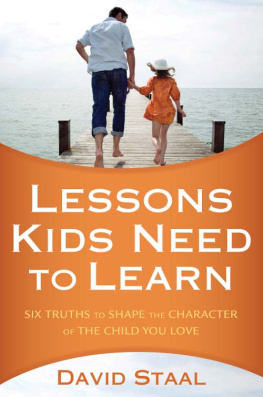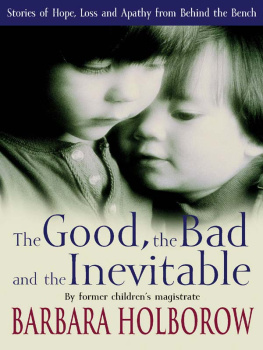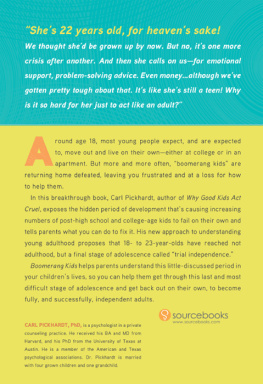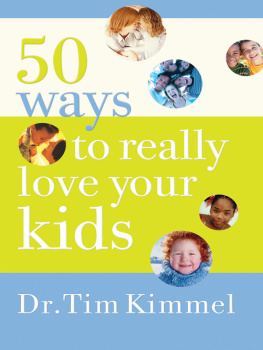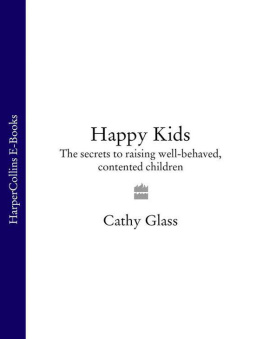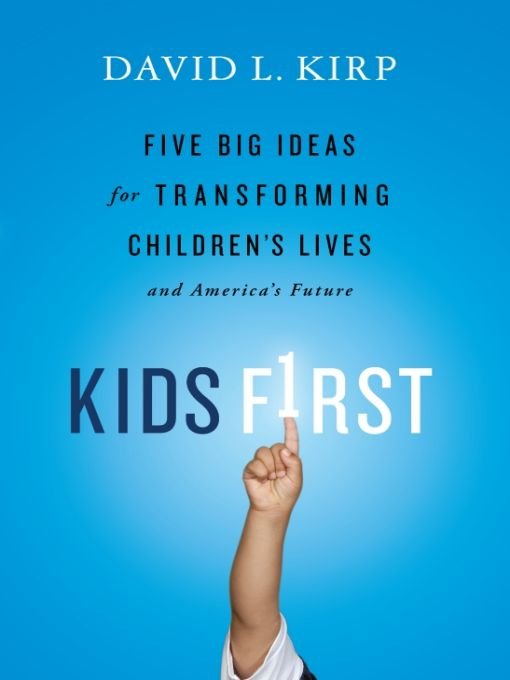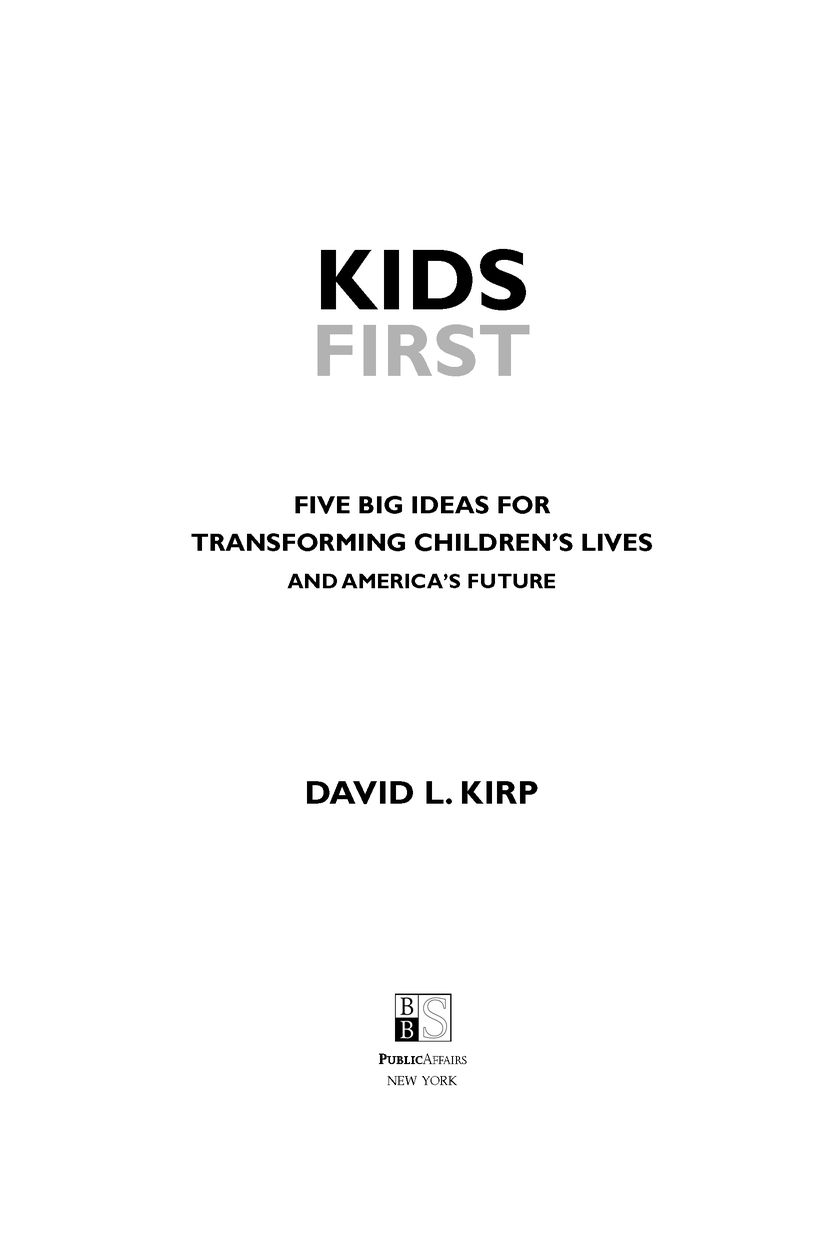Table of Contents
For the unsung heroeswhose hard work
is changing the arc of childrens lives
A NOTE FROM THE AUTHOR
THESE DAYS, when public attention turns to kids, the topic is invariably K-12 education, narrowly construed. The only thing that seems to matter is boosting youngsters reading and math achievement test scores. Thats how influential pundits, such as New York Times columnist David Brooks and scholars at think tanks across the ideological spectrum, have framed the conversation. Its how the No Child Left Behind Act defines success, and its where the Obama administration is putting its dollars. The Race to the Top Education Department initiative pushed states to compete for $4 billion in 2010, with a promise of more in coming years, by toughening academic standards, holding teachers directly accountable for students test results, and expanding charter schools, all in the name of making students more literate and numerate.
Tankers of ink have been spilled in toxic debates over the virtues of this approach. No excuses, its proponents say: The single-minded emphasis on bridging the achievement gap calls schools on the carpet for practicing what former president George W. Bush derided as the soft bigotry of low expectations. The critics counter that it creates a teach-to-the-test regime, that it gives short shrift to everything from art and music to civics and science, and that it ignores all the other factorsincluding life outside the schoolthat mold the lives of children and youth.
Its a false debate. Surely no one would deny that reading and math are keys to the kingdom of success, but its equally plain that children need more than a 2 Rs education. In the late 1960s, when I was the founding director of the Harvard Center for Law and Education, I came to appreciate this problem up close and personal. When parents showed up at legal services clinics with concerns about their kids health or welfare, the lawyers couldnt do much; only when the problem had to do with school could they swing into action. To these rights-minded attorneys this made sense, because unequal opportunities in education, unlike inequities in health or welfare, could be challenged in court. But viewed from the parents or childrens perspective, it was foolishness. Theyre right: Its the kids, not just their left brain development between the ages of five and eighteen, we should concentrate on.
What transpires before kindergartenin the first school, the family, as well as in preschoolinfluences everything that happens later in kids lives. And during their school years youngsters need more than good teachers. Growing up is a journey fraught with challenges. The hours after 3 P.M. and during the summer are critical. Children need to be emotionally and physically healthy. They need reliable and caring adult guidance through the shoals of adolescence and into the world beyond the schoolhouse. They need financial resources for college or vocational training. Most of all they need to feel connected to and part of a larger community and need to be aware of their options for finding their place in it as workers and citizens.
Some people feel that it is a familysnot a governments or a societysjob to meet these needs. But in todays America, in todays economy, fewer and fewer families across the social strata are able to do so without help. If kids needs go unmet, the consequences for our society, our economy, and our future are enormous. Our children, as the lyric goes, are our future, and their growth into productive and responsible citizens is essential to the public interest.
The value of concentrating on kids, not just on the 2 Rs, was drummed into me immediately after the 2008 election, when I served on the Presidential Transition Team. My book The Sandbox Investment: The Preschool Movement and Kids-First Politics had been published the previous year, and it had attracted considerable attention among policymakers and politicians, academics and activists. Id traveled around the country to talk about why early education was of such vital importance, and that visibility likely led to my appointment. There were just a handful of us in the education policy group, which was charged with crafting strategies on issues ranging from parenting to postgraduate education. I worked mainly on developing an early learning and child development agenda.
In the time between the election and the inauguration, seemingly every youth-related organization in the country wanted to meet with us, because theyd felt shut out of the policy conversation during the Bush administration, and so our small gang had to become instant experts on a host of topics. For an hour or so Id have to bone up on vocational education in order to have plausible questions to pose, and later that day Id need to be primed to talk about parenting programs. We met with all of themthe nurse home visitors, the vocational education lobby, the pediatricians, the advocates for adolescents who had fallen (or jumped) off the conveyor belt, and lots more.
While everyone we spoke with had the best of intentions, almost all of them suffered from tunnel vision. University leaders didnt connect with community-college supporters, let alone K-12 activists. Early-learning experts distinguished themselves from child-care advocates. Amid the jockeying for primacy of position and competition for scarce public dollars, none of these advocates could step back from the fray to contemplate the full array of needs from cradle to college.
Going from one conversation to the next, absorbing the views and contemplating the concerns of each group, I began to think about pulling the pieces together and devising a coherent system of supports that included, but didnt begin or end with, rigorous K-12 education. What do kids need? How can we as a society have the greatest impact in assisting families to meet those needs? What would a realistic policy agenda look like that puts the needs of kids first? This book emerged from those questions.
Kids First proposes five big ideas for programs that would transform childrens livesand Americas future. Theres nothing magical or definitive about the number five. Its easy to remember, and we all like best-of lists. Whether its David Lettermans Top Ten Ways BP Can Improve Its Image or U.S. News & World Reports Top 50 Colleges, the list gives us something to focus on and debate about. So, too, the choice of five big ideas for kids.
When I asked friends and experts what belonged on my big ideas inventory, they offered scores of suggestions, ranging from reengaging disaffected youth to giving kids more exposure to the arts. My first cut contained a bakers dozen of ideas, including greatly expanded child care, a commission to assess the child impact of federal policies (just as we look at environmental impact) and a Berlitz for all initiative to make American children true citizens of the world.
The five ideas that Ive targeted share some key features. They dont single out any particular group, but instead are universal in their reach, offering something of value for every youngster. Rather than tinkering at the margin, theyre game-changers that can alter the arc of childrens lives. Far from being untested, theyve been proven to be effective. They are sturdy enough to be usable across the American landscape. And theyre affordable: Think Kia, not Cadillac.


